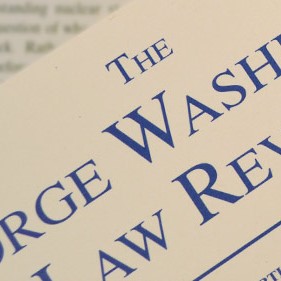Frederick Schauer · June 2008
76 GEO. WASH. L. REV. 914 (2008)
The First Amendment guarantees “the freedom of speech [and] of the press,” but what exactly is the freedom that the First Amendment guarantees and that the First Amendment prohibits Congress (and, now, the states) from abridging? What kinds of rights, structurally and not just substantively, are First Amendment rights? Who or what does the First Amendment protect, and against whom or what are they protected? These are hoary questions which lawyers, judges, and scholars have been wrestling with for generations, and so I will not pretend to be able to say very much that is substantially novel about the topic. Nevertheless, it may still be useful to look at the First Amendment through the lens of some large issues in the theory of rights, which is, of course, also a huge topic. To make things more manageable, therefore, I propose to examine the First Amendment in a Hohfeldian way, looking at who might have First Amendment rights, whom those rights are rights against, and what duties or obligations the existence of those rights imposes on others. In other words, I want to examine not what First Amendment rights are, but what kind of rights First Amendment rights are, and what kind of rights First Amendment rights might be.

